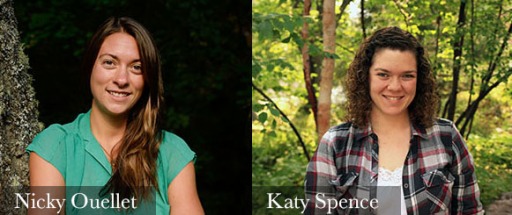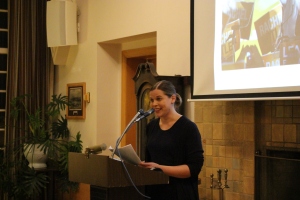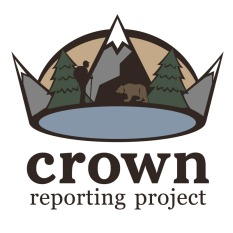
For the second year in a row, two journalism master’s students from the University of Montana will head into the Crown of the Continent, to report in-depth, unique stories about the landscape and the people who live there. The 2016 Crown Reporting Project Fellows are Nicky Ouellet and Katy Spence. Spence will report on the role of beavers in helping to deal with climate change, while Ouellet will look at how decisions made by forest supervisors affect individuals and communities that depend on the Crown’s forest products for their livelihoods.
Both fellows are graduate students in the University of Montana’s Master’s program in Environmental Science and Natural Resource Journalism. A native of the Kansas, Spence hopes her outsider’s perspective will allow her to approach her story with few preconceptions or biases. “So many people are excited about the possibility of using beavers as a natural water mitigation strategy, but just as many think of them as pests,” she said.
Ouellet’s journey took her from New Hampshire, where she grew up, to Ohio, Russia and the Pine Ridge Indian Reservation before she enrolled at UM. She’s currently completing her master’s work on Native American natural resource management. “The Crown Fellowship means I get to spend time with a mycologist chasing down people in the forest and speak with them about what this really unique place means,” she said. “It’s almost an excuse to go camping, learn about the ecology and economy of mushrooms and meet really interesting people – all to produce some great radio that will hopefully connect listeners with a place I love so much.”
Through the Crown Reporting Project, both students will be matched with seasoned journalism professionals who will guide them as they report, produce and pitch their work. In telling her story, Spence plans to combine photography and writing skills she’s cultivated since her time at Truman State University, where she earned a B.A. in English with minors in Biology and Photography. “This story is important for the landscape and for the people within it, and working with a professional journalist to develop it may be the most important journalistic opportunity I’ve ever had,” she said. “I can’t wait to start reporting!”
Ouellet is gearing up to telling her story as a radio piece. She recently won Best in Festival in the student news competition for the Broadcast Education Association’s Festival of Media Arts, for “An ‘80s Cover Band With Global Dreams.” “The Crown Fellowship is the biggest opportunity this school has to chase down an in-depth story about how people are connected to landscapes,” she said. “And I’m really excited to do that in radio because that takes a lot of time – you have to be there to capture the voices of the people – and this fellowship really makes that possible.”
The Crown Reporting Project was inspired by Ted Smith, a pioneer of large-landscape conservation and lover of the Crown. In 2015, graduate students Ken Rand and Celia Talbot Tobin worked with Chris Joyce, of National Public Radio, and Ted Alvarez, of Grist and Backpacker Magazine, to report stories on aquatic invasive species and mining waste.
By Henriette Lowisch



